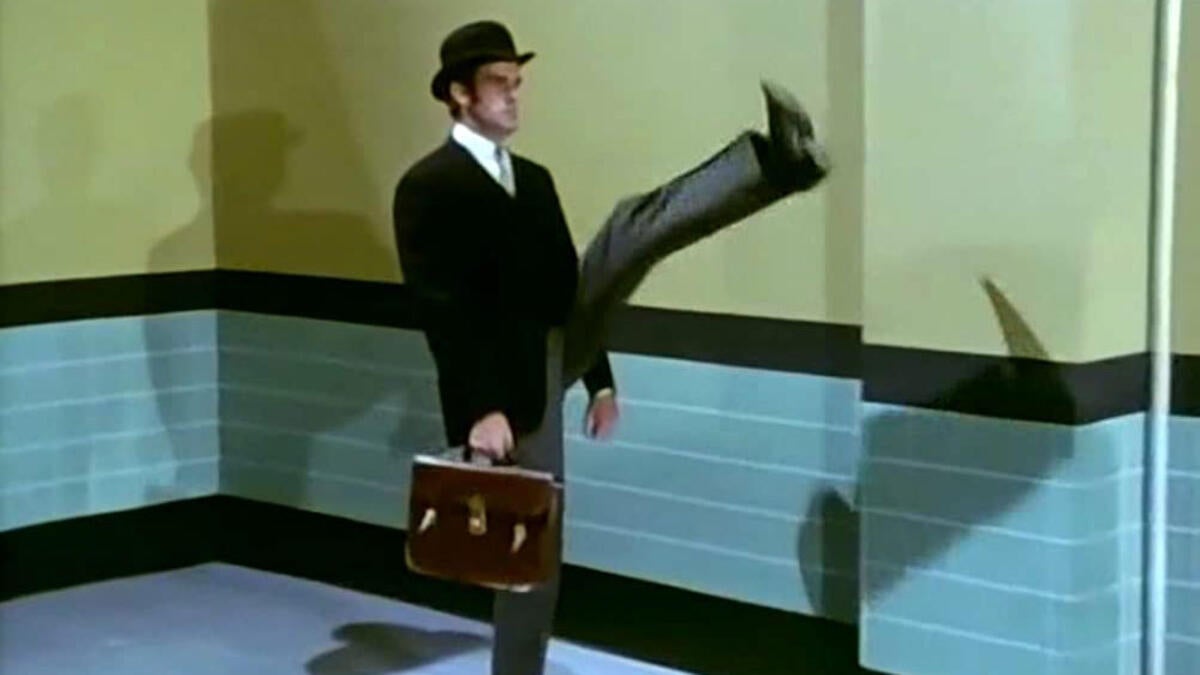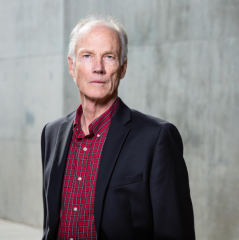This is silly.
Or is it?
(Cue deep commercial voice.)
Looking to lose some weight? Improve your fitness? What if I told you a 1970 Monty Python skit featuring John Cleese and Michael Palin can help you fulfill that New Year’s resolution — and you can have fun while doing it! The best part? It’s free!
Glenn Gaesser
As crazy as it sounds, it’s true. A recently published study led by Glenn Gaesser, a professor of exercise physiology in the College of Health Solutions at Arizona State University, determined that the Mr. Teabag walk done by Cleese in the comedy troupe’s "Ministry of Silly Walks" sketch resulted in a greater energy expenditure — about 2.5 times that of a typical walking pace. And silly walking less than 15 minutes day would meet guidelines for weekly vigorous activity.
If this all sounds a bit, well, silly, the results were published in the December edition of the British Medical Journal and written about in the Washington Post.
All of which raises two questions:
Why is the esteemed British Medical Journal publishing a paper based on a Monty Python skit? And what in the world made Gaesser think of the Ministry of Silly Walks?
Well, to answer the first question, the British Medical Journal each year publishes what Gaesser called a “quirky” Christmas edition.
“They run humorous types of articles, but they have to be science-based,” Gaesser said. “You can’t make them up. So, it’s not phony data fabricated in any way. But it’s a very popular issue because it contains some of these quirky kinds of stories.”
As for why Gaesser decided to do a study of silly walking, well, he’s been a Monty Python fan ever since he went to college at the University of California, Berkeley in the 1970s.
“We (his fellow students) watched their moves, we saw their skits and 'Silly Walks' was one of them,” Gaesser said. “At the time, we didn’t think much of it other than the fact that it was just outrageously and insanely funny.”
Fast-forward to 2021. After a pause because of the pandemic — and with the British Medical Journal Christmas edition in mind — Gaesser had 13 healthy adults, ages 22 to 71, watch the walks of Mr. Teabag and Mr. Putey (Palin) two times and then try to re-create the walks for five minutes around a 30-meter track.
(There’s no way to accurately describe the walks of Mr. Teabag and Mr. Putey. So, check out the video, which places their characters side-by-side with the adults in Gaesser’s study.)
What they found: Exchanging just one minute of usual walking pace with one minute of Mr. Teabag's walk resulted in an increase of energy expenditure of 8 calories per minute for men and 5 calories per minute for women.
(The Putey walk did not result in a significantly greater energy expenditure).
“We calculated that just 11 minutes a day, spread throughout the day — you could do a couple minutes here, a couple minutes there – if you could build up to 11 minutes a day you would meet the current public health guidelines of at least 75 minutes a week of vigorous intensity activity, which virtually no one does,” Gaesser said.
Not that Gaesser expects the benefits of silly walking to outweigh the embarrassment factor.
“I mean, we’re not really serious about this in the sense that I have no reason to suspect anyone would really try this,” Gaesser said. “But this had to go to external review, and it went to four different people. And when we read the reviews, it looked like some of them actually thought we were serious.”
Gaesser did note that much of the walking Cleese’s character did in the skit was indoors.
“So, someone could conceivably say, ‘Well, I can do this without being seen,’ ” Gaesser said with a chuckle. They could do the Teabag style in their office. Or it could be just something you make up on your own that basically expends calories.”
Silly?
Hey, if it works …
Top photo: John Cleese in the hallways of the Ministry of Silly Walks from the second season of "Monty Python's Flying Circus." The episode aired Sept. 15, 1970. Video still courtesy of BBC.
More Health and medicine
College of Health Solutions medical nutrition student aims to give back to her Navajo community
As Miss Navajo Nation, Amy N. Begaye worked to improve lives in her community by raising awareness about STEM education and health and wellness.After her one-year term ended last month, Begaye’s…

Linguistics work could improve doctor-patient communications in Philippines, beyond
When Peter Torres traveled to Mapúa University in the Philippines over the summer, he was shocked to see a billboard promoting Arizona State University.“It wasn’t even near the university,” said…

Turning data into knowledge: How Health Observatory at ASU aims to educate public
This is how David Engelthaler described his first couple of months on the job as executive director of the Health Observatory at Arizona State University:“It’s been a little bit of drinking from the…

